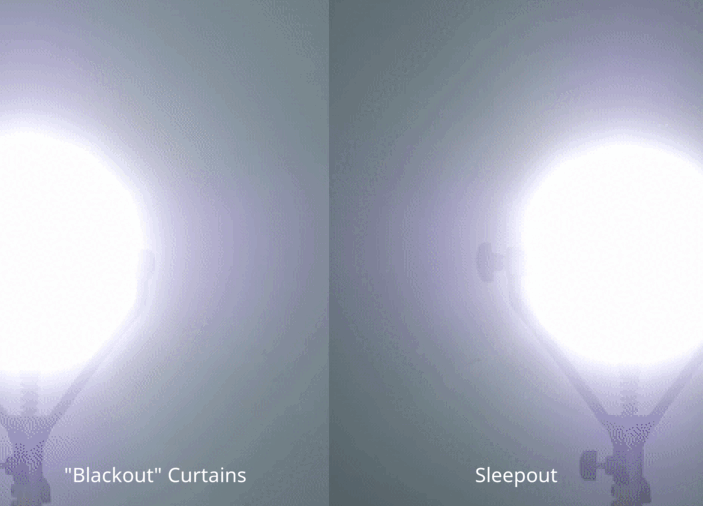As new parents, keeping your baby comfortable and safe during sleep is a top priority. One common concern that often arises is whether it's normal for a baby to feel cold while sleeping. Understanding your baby's comfort needs and ensuring they have the appropriate sleep environment is crucial for their well-being and development. In this comprehensive guide, we'll explore everything parents should know about managing their baby's temperature during sleep, along with the role of Sleepout Home Blackout Curtains in creating an optimal sleeping environment.
Understanding Baby’s Comfort and Safety in Sleep
Babies cannot regulate their body temperature as effectively as adults. This makes them more susceptible to changes in the external environment. Newborns, in particular, need a bit of help to stay warm, as they can lose body heat rapidly, almost four times quicker than an adult. However, overheating can also pose risks, including increased chances of Sudden Infant Death Syndrome (SIDS). Thus, maintaining a balance is key.
Signs Your Baby May Be Cold
It’s important to keep an eye on signs that your baby might be cold. Unlike adults, babies typically won't shiver or complain, but there are physical signs you can look for:
- Cool hands and feet
- Pale skin
- Less active or unusually quiet
- Is fussing, which could be a sign they're uncomfortable
How to Ensure Your Baby Is Warm Enough
The ideal room temperature for a baby to sleep in is approximately between 68 to 72 degrees Fahrenheit (20 to 22 degrees Celsius). Here’s how you can ensure that your baby remains warm enough throughout the night:
- Dress Appropriately: A good rule of thumb is to dress your baby in one more layer than an adult would wear at the same temperature. Use fabrics like cotton or fleece that do not irritate the skin and can provide the necessary warmth.
- Use a Sleep Sack: These are wearable blankets that come in different thicknesses and materials. They keep babies warm without the risks that loose blankets pose.
- Keep The Room Warm: Use a reliable heating system to maintain a steady room temperature. Avoid placing the baby’s crib near a window or an air draft.
- Opt for a Firm Mattress: Soft bedding can trap cold air. A firm mattress not only helps in maintaining your baby’s body temperature but is also safer for a baby’s sleep.
The Risk of Overheating
Just as important as it is to prevent your baby from getting too cold, it's also vital to ensure they do not overheat. Symptoms that your baby is too warm include sweating, damp hair, flushed cheeks, heat rash, and rapid breathing. To prevent overheating:
- Avoid overbundling in clothes or blankets. Feel your baby's neck or back to check if they are sweating.
- Use lighter bedding and clothing during warmer months.
- Regulate the room temperature using natural ventilation or air conditioning during hot weather.
Creating an Ideal Sleep Environment with Blackout Curtains
One effective way to create a comfortable sleep environment is by using blackout curtains. Sleepout Home Blackout Curtains not only block out external light, ensuring your baby’s internal clock remains unspoiled, but they also help in insulating the room. Whether it's hot or cold outside, these curtains can help maintain a more consistent room temperature.

Additional Tips for Baby's Good Night Sleep
Beyond temperature control, here are further tips to help your baby sleep comfortably through the night:
- Regular Sleep Schedule: Sticking to a bedtime routine can significantly improve your baby's sleep quality.
- Safe Sleeping Practices: Always place your baby on their back for sleep and keep the crib free of pillows, toys, and loose bedding.
- Calming Pre-Sleep Activities: Activities like reading a bedtime story or gentle rocking can help soothe your baby before sleep.
Conclusion
It’s normal for babies to feel a bit colder due to their developing thermoregulation system. By monitoring signs of discomfort and employing strategies like appropriate dressing, using sleep sacks, and setting up a comfortable sleep environment with items like the Sleepout Home Blackout Curtains, you can ensure that your baby not only stays at an appropriate temperature but also safe and comfortable throughout their sleep.
Keeping an eye on both overheating and overcooling will protect your baby and help in fostering healthy sleep patterns that contribute to their overall growth and development. Remember, each baby is different, and it may take a little time to find the perfect sleep setup. Trust your instincts—you know your baby best.


